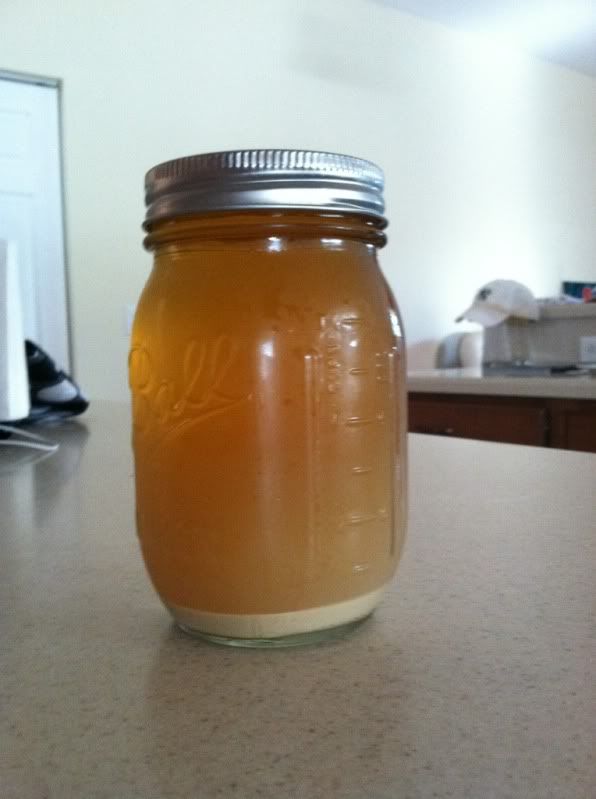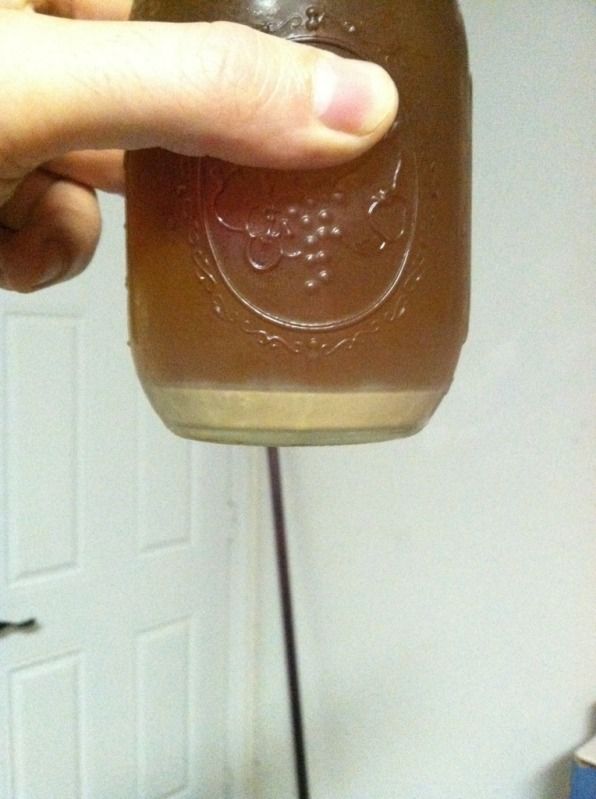Made a started with the first batch of washed yeast last night. I washed it back on 7-28, so we shall see how this goes. The first pic is after being in the fridge for a day after washing and the next was right before I made the starter.







pabloj13 said:Or put another identical jar next to it. Fill it up to the same level with water, then dump that water into a measuring cup. Bonus: no math.
Made a started with the first batch of washed yeast last night. I washed it back on 7-28, so we shall see how this goes. The first pic is after being in the fridge for a day after washing and the next was right before I made the starter.













![Craft A Brew - Safale S-04 Dry Yeast - Fermentis - English Ale Dry Yeast - For English and American Ales and Hard Apple Ciders - Ingredients for Home Brewing - Beer Making Supplies - [1 Pack]](https://m.media-amazon.com/images/I/41fVGNh6JfL._SL500_.jpg)
20ish
So you used 20 on the yeastcalc.com site to tell you how to build your starter?
Thanks
So, does this look right?
Yeah, looks right to me. Others might have some ideas on different volumes. Boy, it really shows you how much a stir plate helps though...
But isn't there a difference between the 'Repitching from Slurry' tab and what this thread is about? I thought mrmalty assumed someone just pours some of the yeast cake into a jar and throws it into the fridge. At least that's what I think of when someone uses the term 'slurry.'
I always thought one of the keys to yeast washing was using water that has had much of the oxygen driven off in order to encourage the yeast to go dormant, thereby extending its viability. Assuming that's the case, wouldn't mrmalty significantly underestimate the viability of washed yeast?
I appreciate the notion that maybe it's best to just go with what mrmalty says, realizing that the results may be very conservative, but I just have to wonder if this makes sense when I look at the results from the yeastcalc.com screen shot above where it shows 5.5 bil cells need to be grown up to 219.
Is this reasonable or is comparing 'slurry' to 'washed' like comparing apples to oranges?
I have found the Yeastcalc estimates for how much yeast I will end up with after the first starter with washed yeast to be pretty darned close, which implies that the yeast behaved the way the algorithm predicted.

Interesting. Did you determine that by cell count or by measuring the volume of settled yeast?
I think what I would really like to see is a cell count done on washed yeast of various ages to get a better understanding of how it compares to the results from the mrmalty 'liquid yeast' and 'repitching from slurry' tabs. (Maybe I should ask Santa for a microscope and hemocytometer!) Short of that, I'm inclined to go with your approach of starting with the 'repitching' tab set to 3 and 10.

It was just from the settled yeast. I do have many microscopes and hemacytometers. I should check some of my washed yeast.
TBaGZ said:Made a started with the first batch of washed yeast last night. I washed it back on 7-28, so we shall see how this goes. The first pic is after being in the fridge for a day after washing and the next was right before I made the starter.

By the looks of the photo it seems like you brought over quite a bit of the trub. Here's what I do, and it always turns out just like the photos from the original post.
Once the beer has been racked out, I shake the carboy like mad to loosen everything before I add the water, just so I don't have to shake as much once I've added the water that has had the oxygen driven off. Once everything is loose and the clumps are gone, I add water to the carboy, shake just to mix, let it sit for 10-20 minutes and then I pour the liquid on top - being very careful to not disturb the settled trub - into my 1 gal jug. I let that sit fxor another 10-20 minutes and then I very carefully pour the liquid on top into 2-4 pint jars.
As far as how long I let it sit, I pour to the next jar once I start to see yeast settling. It's usually pretty obvious because you'll start to see a layer form that's much lighter in color than what's already settled. Hope this helps.
shaunvfx:
To maximize washed yeast and minimize trub...
(1) If pouring, add the boiled and cooled water, then immediately lay the carboy on its side and add a rag to prevent the carboy from rolling off the counter [table, or what have you]. Wait 25 to 30 minutes, then pour into mason jars.
(2) If using a racking cane, add the boiled and cooled water, then immediately place a rag [newspapers, or what have you] under the bottom of one side of the carboy. This way, the trub will fall to the opposite corner... and after 25 to 30 minutes, you will be able to siphon off more washed yeast and less tru, which is pretty much the entire goal here.
dlyford said:I followed the directions and had great success. Here is a pic of the final product.